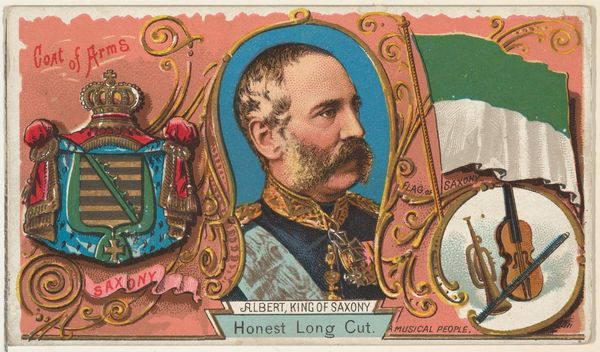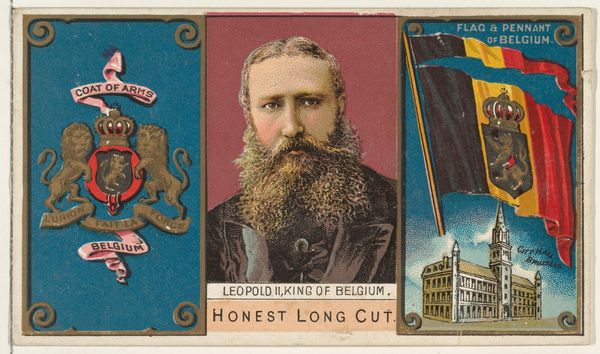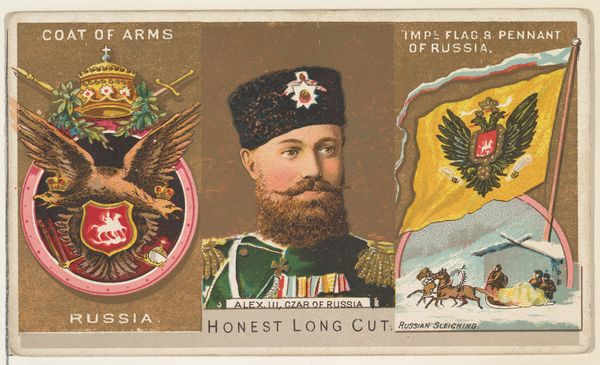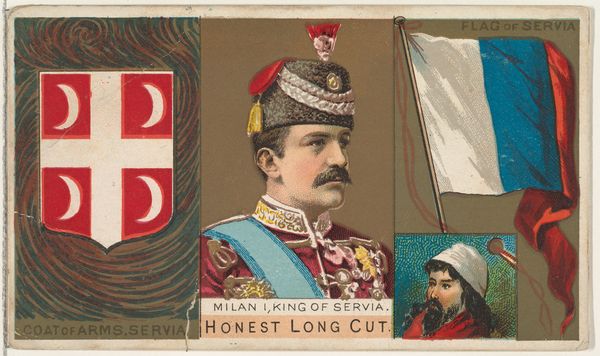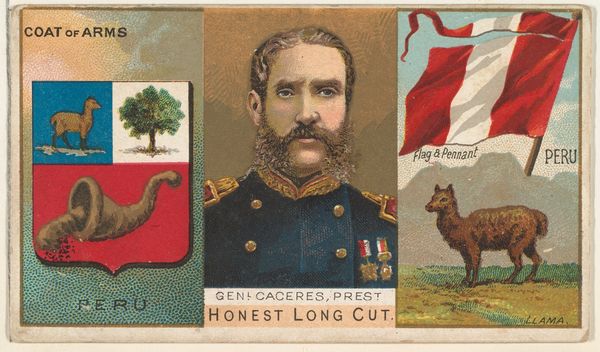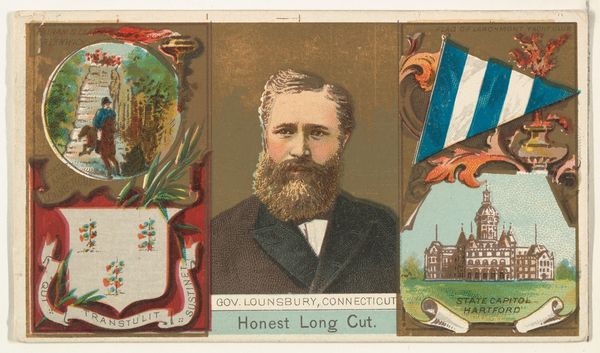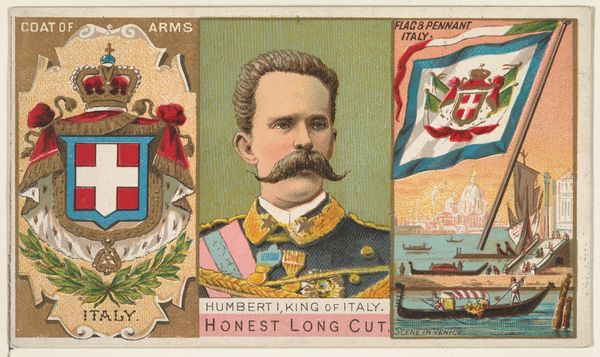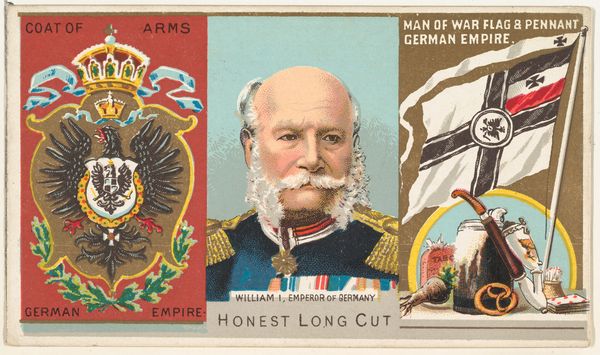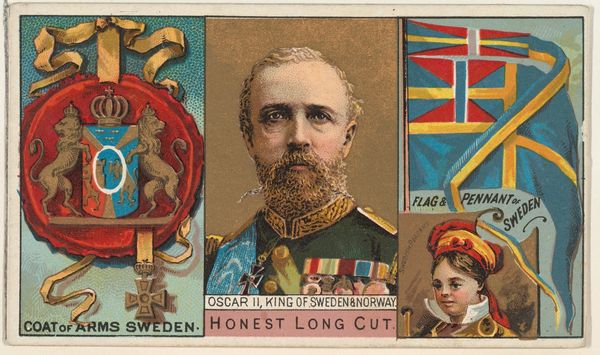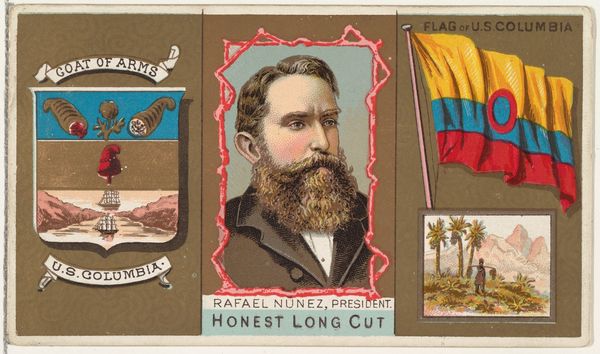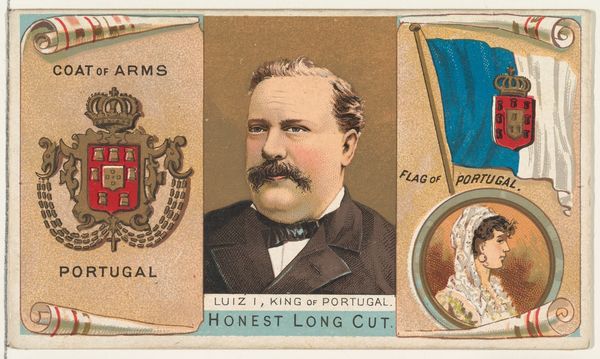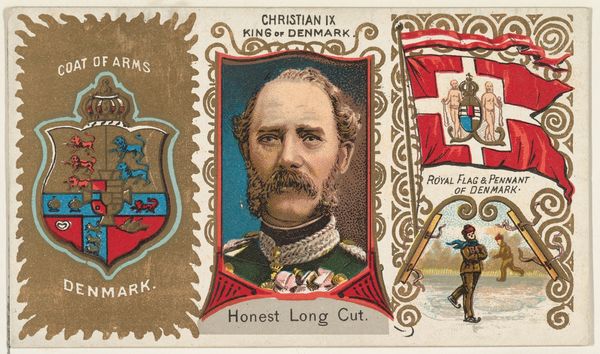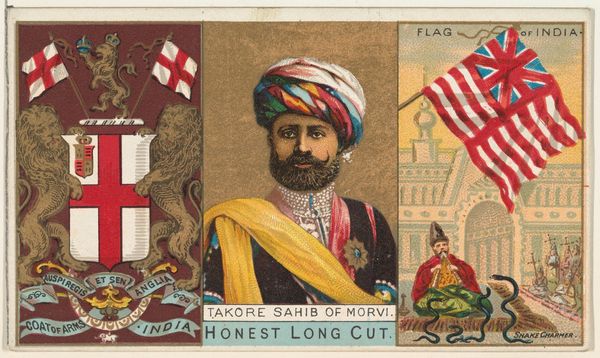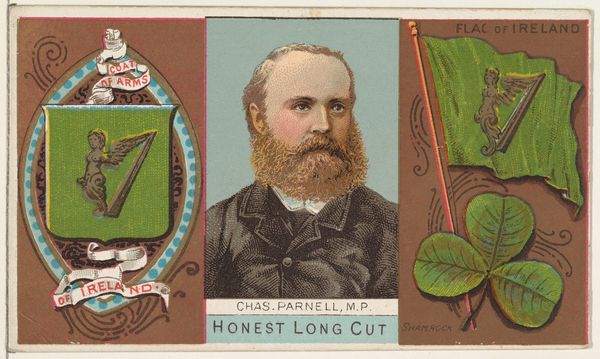
Charles, King of Romania, from the Rulers, Flags, and Coats of Arms series (N126-1) issued by W. Duke, Sons & Co. 1888
0:00
0:00
drawing, print, photography
#
portrait
#
drawing
# print
#
caricature
#
caricature
#
photography
#
portrait art
Dimensions: Sheet: 2 1/2 × 4 5/16 in. (6.4 × 11 cm)
Copyright: Public Domain
Curator: Welcome. We're looking at "Charles, King of Romania, from the Rulers, Flags, and Coats of Arms series," a print made around 1888 by W. Duke, Sons & Co. It's part of a series of collectible cards. Editor: My first thought is of something mass-produced. The graphic style is bold, almost flattened, and the colors seem deliberately limited to maximize visual impact on a small scale. It feels… practical. Curator: Indeed. Note how the composition divides the card into distinct sections—the regal portrait flanked by symbolic representations of Romania: its coat of arms and flag, also integrating an image of a Romanian Soldier. Each segment, carefully arranged, functions almost as a visual signifier. Semiotics in miniature, if you will. Editor: It's interesting you mention practicality, because while visually rich, this item fundamentally functioned as a small advertisement distributed with tobacco. It aimed to stimulate both trade and national sentiment. Who designed these? Were these pieces assigned to specialized craftsmen or assembly-line workers? Curator: It’s hard to say precisely. Though the portraits might seem almost generically regal, I notice a level of nuanced detail within the rendering of Charles's beard and in the heraldic elements of the crest. The graphic simplification is consistent, nonetheless. Editor: It prompts questions about the working conditions for such commercial art during the late 19th century. How was value determined and distributed among workers responsible for various steps, from artists and engravers to print laborers? And was this ‘high art’ or simple trades work? Curator: From a formalist view, one appreciates how all the design choices are balanced – between realism, graphic abstraction, symbolism. Editor: Though that’s true, I can't help seeing it through the lens of commercial industry. This reflects material values as it reveals more about the period's economy and society. The medium is integral to meaning here. Curator: A valid point. Looking at the graphic and symbolic aspects provides understanding too, albeit of a more internalized conceptual framework. Editor: Both views combined really showcase all of the intricacies in this piece. Thanks for exploring this artwork together. Curator: The pleasure was all mine.
Comments
No comments
Be the first to comment and join the conversation on the ultimate creative platform.
